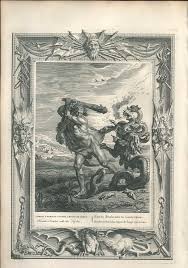ANTONIO RAIMO GALLERY
Picart, Mythology, Temple of Muses, Hercules
Picart, Mythology, Temple of Muses, Hercules
Couldn't load pickup availability
Let's delve into the connections between Bernard de Montfaucon (Picart), mythology, the Temple of the Muses, and the figure of Hercules:
1. **Picart (Bernard de Montfaucon)**:
Bernard de Montfaucon, known as Picart, was a French scholar and antiquarian in the 18th century. He was renowned for his meticulous illustrations and writings on ancient artifacts, architecture, and cultural practices, providing valuable insights into the art and archaeology of ancient Greece and Rome.
2. **Mythology**:
Greek mythology consists of a vast body of tales and legends about gods, heroes, and mythical creatures. Hercules (Heracles in Greek) is one of the most famous heroes in Greek mythology, renowned for his strength, courage, and epic feats known as the Twelve Labors.
3. **Temple of the Muses**:
The Muses are goddesses in Greek mythology who inspire the arts and sciences. Temples dedicated to the Muses were centers of learning, artistic inspiration, and cultural discourse in ancient Greece, where poets, musicians, and scholars sought divine inspiration.
4. **Hercules (Heracles)**:
Hercules is a prominent figure in Greek mythology, known for his extraordinary strength and heroic adventures. His Twelve Labors, assigned to him as punishment by King Eurystheus, include tasks such as slaying the Nemean Lion, capturing the Golden Hind of Artemis, and cleaning the Augean Stables.
**Connecting the Elements**:
- **Picart’s Work and Mythological Depictions**: Picart's illustrations and writings would likely include depictions of mythological scenes, including those involving Hercules. His work provides valuable visual and descriptive evidence of how Hercules and other mythological figures were represented in ancient art and artifacts.
- **Temple of the Muses and Hercules**: While Hercules is not directly associated with the Muses, his heroic deeds and mythological significance would have been celebrated and referenced in the broader cultural milieu of ancient Greece. Temples dedicated to the Muses served as places where myths like Hercules' exploits were recounted, perhaps inspiring artists and poets to depict heroic themes.
- **Cultural Significance and Interpretation**: The study of Hercules within the context of Picart’s work and the Temple of the Muses sheds light on how ancient Greeks revered heroes and mythological narratives. These stories served as moral exemplars and sources of inspiration, influencing artistic expression and philosophical thought.
In summary, Bernard de Montfaucon’s (Picart’s) scholarly contributions enrich our understanding of how myths like those involving Hercules were depicted and interpreted in ancient Greece. His detailed studies of ancient artifacts and temples provide a window into the cultural and artistic significance of mythological narratives within places of intellectual and creative exploration such as the Temple of the Muses.

-
Shipping
Share the details of your shipping policy.
-
Returns
Share the details of your return policy.
Image with text
Pair text with an image
Pair text with an image to focus on your chosen product, collection, or artist. Add details on availability, style, or even provide a review.
Image with text
Pair text with an image to provide extra information about your brand or collections.

